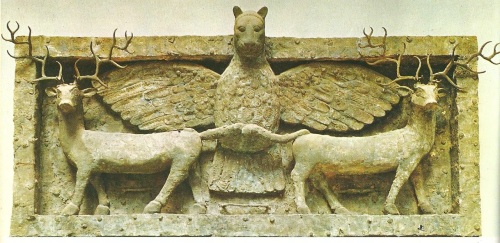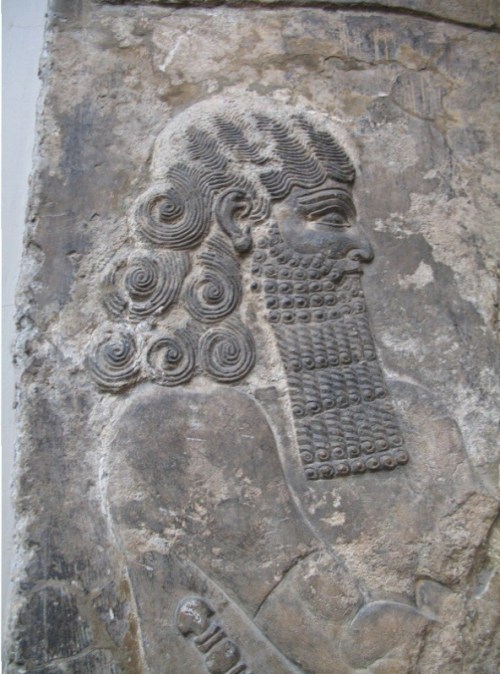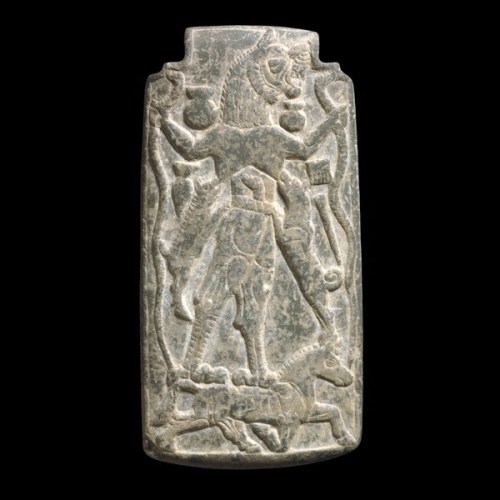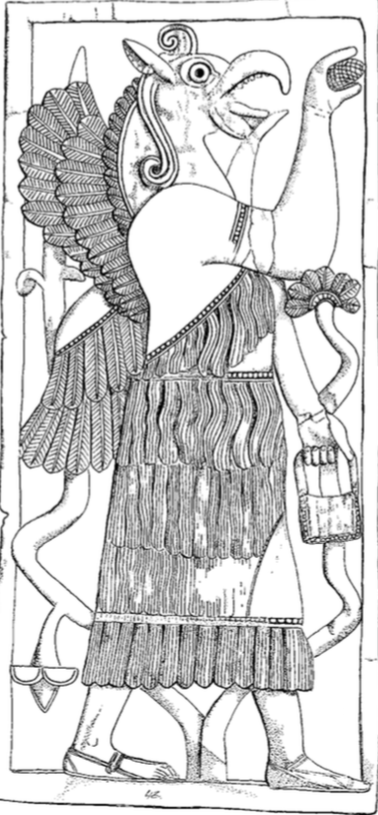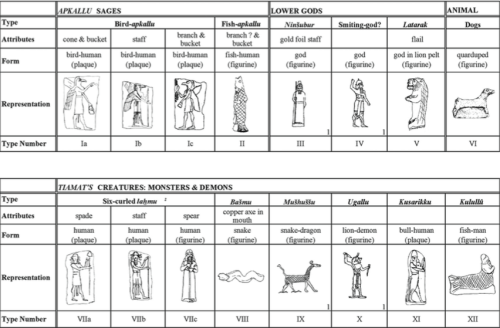Curnow: Ziusudra Divides Invented Myth from Mythologized Fact
“After this, the story begins to become more confused. According to the legend preserved in a surviving fragmentary text (Dalley 2000, pp. 184-7), Adapa was the priest of Ea in his temple at Eridu. Eridu was regarded as one of the most ancient cities of Mesopotamia and the place where kingship first appeared as a gift from the gods.
Although the narrative is not without its lacunae and ambiguities, it seems that Ea chose to make Adapa omniscient and wise, but not immortal. As such, he is an heroic figure, but nothing more.
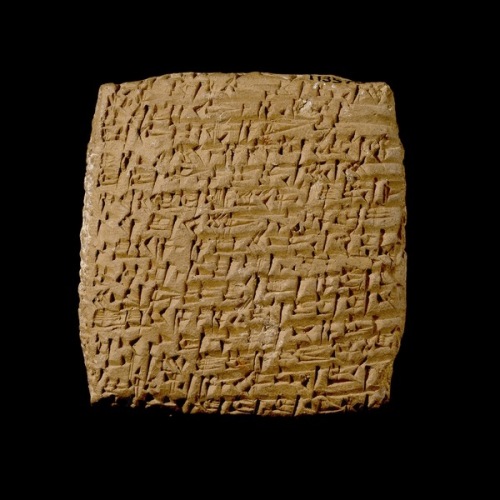
The Scheil dynastic tablet or “Kish Tablet” is an ancient Mesopotamian cuneiform text containing a variant form of the Sumerian King List.
The Assyriologist Jean-Vincent Scheil purchased the Kish Tablet from a private collection in France in 1911. The tablet is dated to the early 2d millennium BCE.
https://en.wikipedia.org/wiki/Scheil_dynastic_tablet
However, another very different story is told of Uan by Berossus (Hodges 1876, p. 57). According to this one, Uan emerged from the sea with the body of a fish, although added to this were a human head and human feet.
At night, this amphibious creature returned to the sea to rest. All the apkallu took this form. As they were created and / or sent by Ea, who was closely associated with the fresh water of his great-great-grandfather Apsu, there is a certain logic in the apkallu having something in common with freshwater fish.
Iconographical evidence indicates the apkallu could also be portrayed with the heads of birds, or with wings, or both. The one thing they were certainly not, according to this version of the myth, is human beings who were made wise. They were supernatural creatures, not gods, but bearing gifts from the gods.
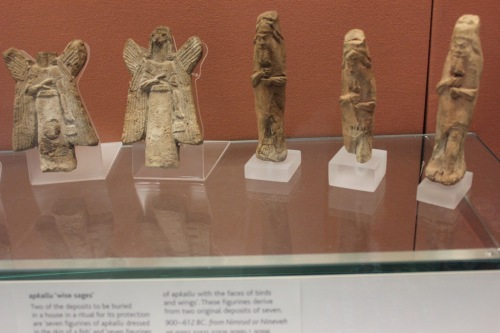
Bird Apkallū and Fish Apkallū, the so-called purādu-fish, side by side. Apkallū statuettes of this design were buried in appropriate places in the home of a Babylonian exorcist. They were believed to have prophylactic qualities, guarding the home from evil.
So far only Adapa / Uan has been mentioned by name. For the sake of completeness, something can be said about the other apkallu, although little can be said with any certainty. They are known by various names, and different lists are not entirely consistent with each other.
Berossus, writing in Greek in the third century BCE, calls them Annedotus, Euedocus, Eneugamus, Eneubolus, Anementus and Anodaphus (Hodges 1876, pp. 53-4), while a much older Sumerian king list calls them Uanduga, Enmeduga, Enmegalamma, Anenlilda, Enmebulugga and Utuabzu (Wilson 1977, p. 150).
Although the myth relating to Adapa might generously be described as sketchy, virtually nothing is known of the others at all apart from their names, the names of the kings they served as counsellors, and the city-states in which they discharged this function.
Collectively it is said that they angered the gods and were banished back to the waters whence they came (Dalley 2000, p. 182). And other sources relating to the myth suggest that it was not Ea who sent them but Marduk, or Nabu or Ishtar.
There is a further myth that bears on the subject of wisdom, and this one concerns the individual variously known as Atrahasis, Utnapishtim and Ziusudra. With him we perhaps begin to approach the ill-defined threshold that divides invented myth from mythologized fact.
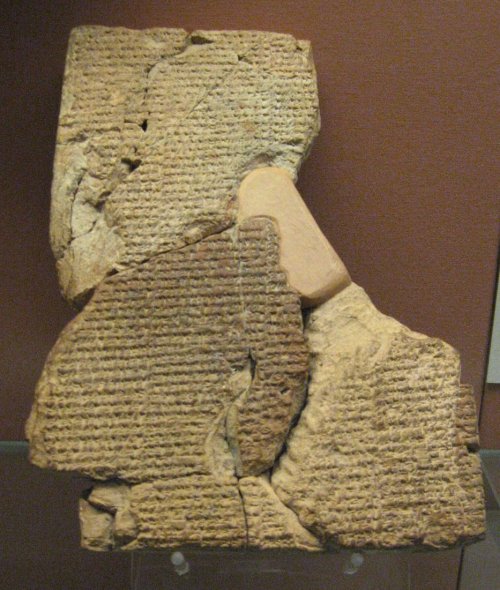
Cuneiform tablet with the Atrahasis Epic.
Babylonian, about 17th century BCE.
From Sippar, southern Iraq.
A version of the Flood story.
The story outlines the structure of the universe according to Babylonian beliefs. Heaven is ruled by the god Anu, the earth by Enlil and the subterranean sweet water by Enki. The text then explains how the minor gods work in the fields but then rebel. As a result, humans are made from clay, saliva and divine blood to act as servants of the gods.
This does not prove a perfect solution, as the humans reproduce and their noise disturbs Enlil’s sleep. He decides to destroy them with plague, famine, drought and finally a flood.
However, each time Enki instructs one of the humans, Atrahasis, to survive the disasters. The god gives Atrahasis seven days warning of the flood, and he builds a boat, loads it with his possessions, animals and birds. He is subsequently saved while the rest of humankind is destroyed.
However, the gods are unhappy as they no longer receive the offerings they used to.
There is a gap in the text at this point but it does end with Atrahasis making an offering and Enlil accepting the existence and usefulness of humans.
Copies of this story have survived from the seventeenth to the seventh century BCE showing that it was copied and re-copied over the centuries. This is the most complete version. There are clear similarities between this Flood story and others known in Mesopotamian literature, for example, the Epic of Gilgamesh.
T.C. Mitchell, The Bible in the British Museum (London, The British Museum Press, 1988)
S. Dalley, Myths from Mesopotamia (Oxford University Press, 1991)
W.G. Lambert and A.R. Millard, Atra-hasis (Oxford, Clarendon Press, 1969)
http://www.britishmuseum.org/explore/highlights/highlight_objects/me/c/cuneiform_the_atrahasis_epic.aspx
If the name of Atrahasis (meaning “extra-wise”) is unfamiliar, his story is less so. The surviving text (Dalley 2000, pp. 9-35), which includes its own creation myth, tells of the gods sending a great flood to destroy humanity, but thanks to a warning from Ea, Atrahasis builds a boat and so is saved.
It is this flood that ends the period when the apkallu walked upon the earth, and the distinction between the antediluvian and the postdiluvian seems to have remained firmly established in the Mesopotamian mindset. That parts of Mesopotamia suffered serious flooding from time to time is hardly implausible, but what, if any basis, the story of a great flood bears to real events remains a matter for speculation.”
Trevor Curnow, Wisdom in the Ancient World, Bloomsbury, 2010, pp. 40-1.

